Content planning is the process of deciding what you’ll publish and when. Its main role is to prioritize content creation based on a marketing and content strategy.
If you regularly create content (as you probably should), you need proper content planning to prioritize the creation based on what makes the most sense for your business at a given time. That’s because the resources required to realize content ideas that you come up with or are thrown at you usually far exceed the resources you have.
In this guide to content planning, we’ll go through five steps.
Do you want to create a content plan for your social media accounts, newsletter, YouTube channel, or your own website? You can do that for all of them—but you should do so separately. That’s because each channel has its own objectives, and there are many ways to achieve them.
Some channels also don’t necessarily require their own content plans. For example, it is enough for most businesses to schedule social media posts a few days ahead of time in a tool like MeetEdgar, and there’s rarely a need for high-effort plans.
Generally speaking, the more resources you invest into creating the content, the more you should invest into efforts to plan it properly. This will naturally have the biggest payoff for long-form articles, blog posts, landing pages, and videos.
For this reason, we’ll mainly focus on content planning for websites here. That’s what most people are looking to learn anyway. Let’s dig into it.
Having a sizeable list of topics you’ll like to cover someday is essential to content planning. How else will you be able to prioritize what’s best to work on at a given time? We want the list to minimize the opportunity cost of not covering highly valuable pieces of content that you’re not aware of.
This is when keyword research comes into play. It’s the process of understanding the language your target customers use when searching for your products, services, and content. It then involves analyzing, comparing, and prioritizing the best keyword opportunities for your website.
Keyword research is the best method to find out which topics are popular with your audience. It also allows you to later prioritize the list based on provided metrics (more on that later).
For example, we can brainstorm a few seed keywords that characterize the niches we’re in. Then plug the keywords into a keyword research tool like Ahrefs’ Keywords Explorer. Here’s what you’ll be looking at:
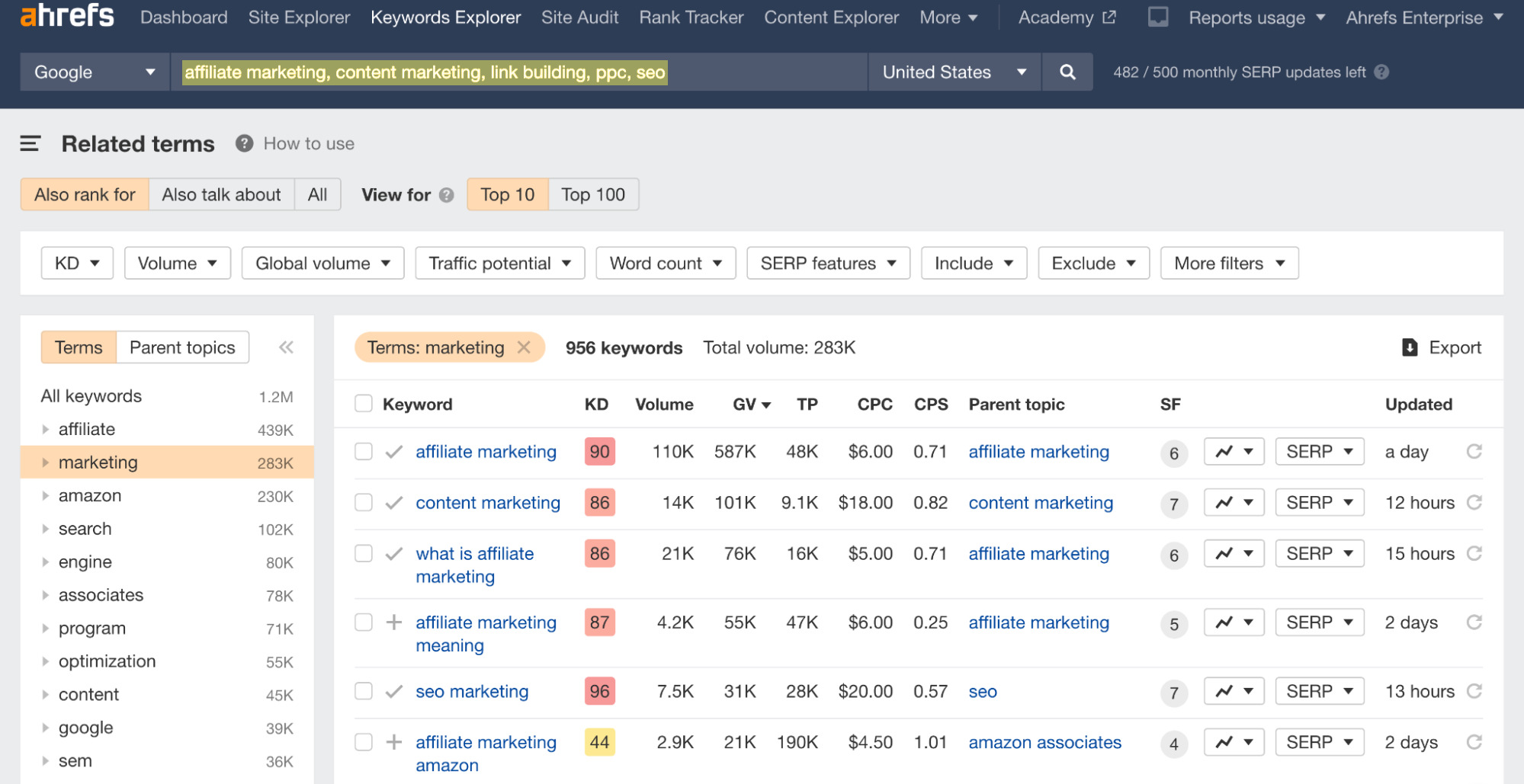
See the check marks on the left of each keyword? That means the keyword is part of a list that you created. It’s an easy way to keep all relevant keywords in one place. Here’s what expanding on a “coffee” keyword list looks like:
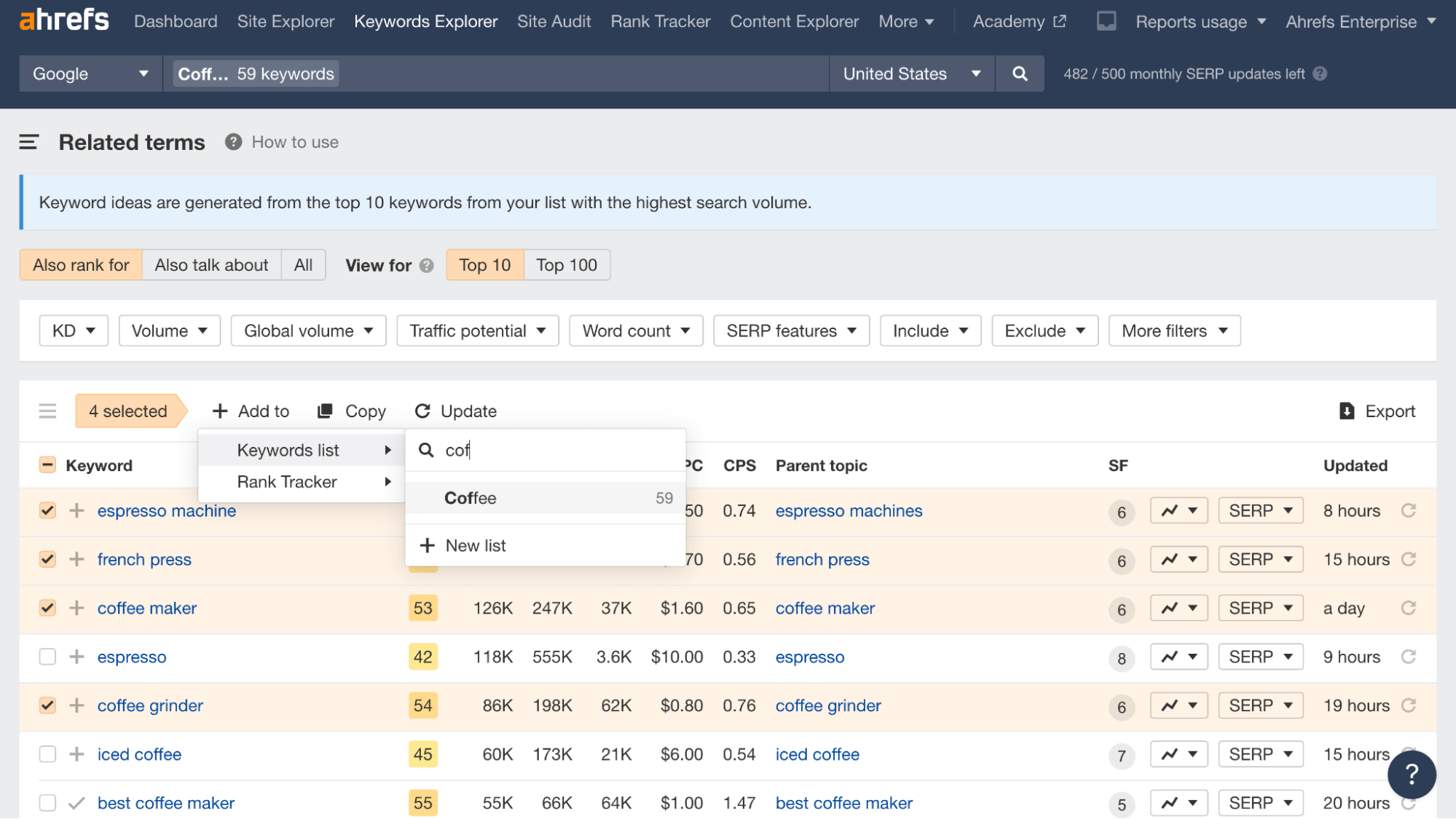
The process of discovering and selecting relevant keywords will take hours, but it’s well worth it. After you’re done, export your keyword list to Excel or Google Sheets because you’ll have to add your own input besides all the Ahrefs-provided metrics. Here’s an example from a subsection of our own list of topics:

Not everything revolves around getting search traffic that converts into customers, though. Of course, that’s the most common SEO goal. But you can write about topics with no or little search demand that can be highly valuable for SEO too. I’m talking about link baits: content designed to attract backlinks that can pass their link equity to your other pages.
You can find what type of content gets the most backlinks in your niche by looking up any website in the Best by links report in Ahrefs’ Site Explorer. What works the best in our case is unique data studies:
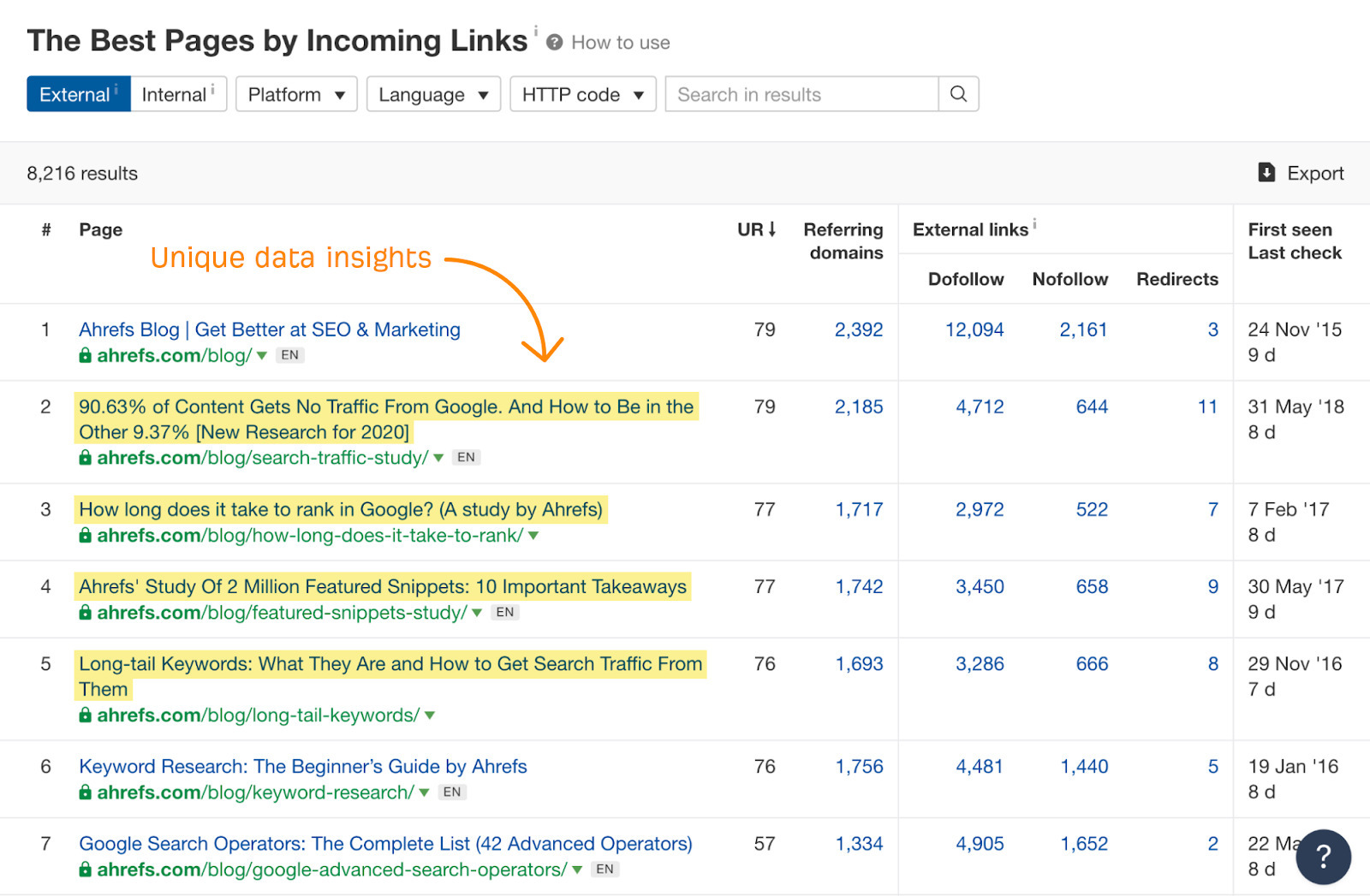
This is where you let your creativity shine. You can even plan content pieces that you want to go viral as part of a PR campaign. Those naturally have their SEO benefits in the form of links and mentions too.
Now, you may be thinking that I’m too focused on SEO. Yes—but that’s because search engines are usually the best, constant source of traffic.
But there are cases where it makes sense to publish content without any SEO goal in mind. Think about important announcements or product updates, for example. We have a separate section on our blog for these, and they’re as important as any other part of the blog:
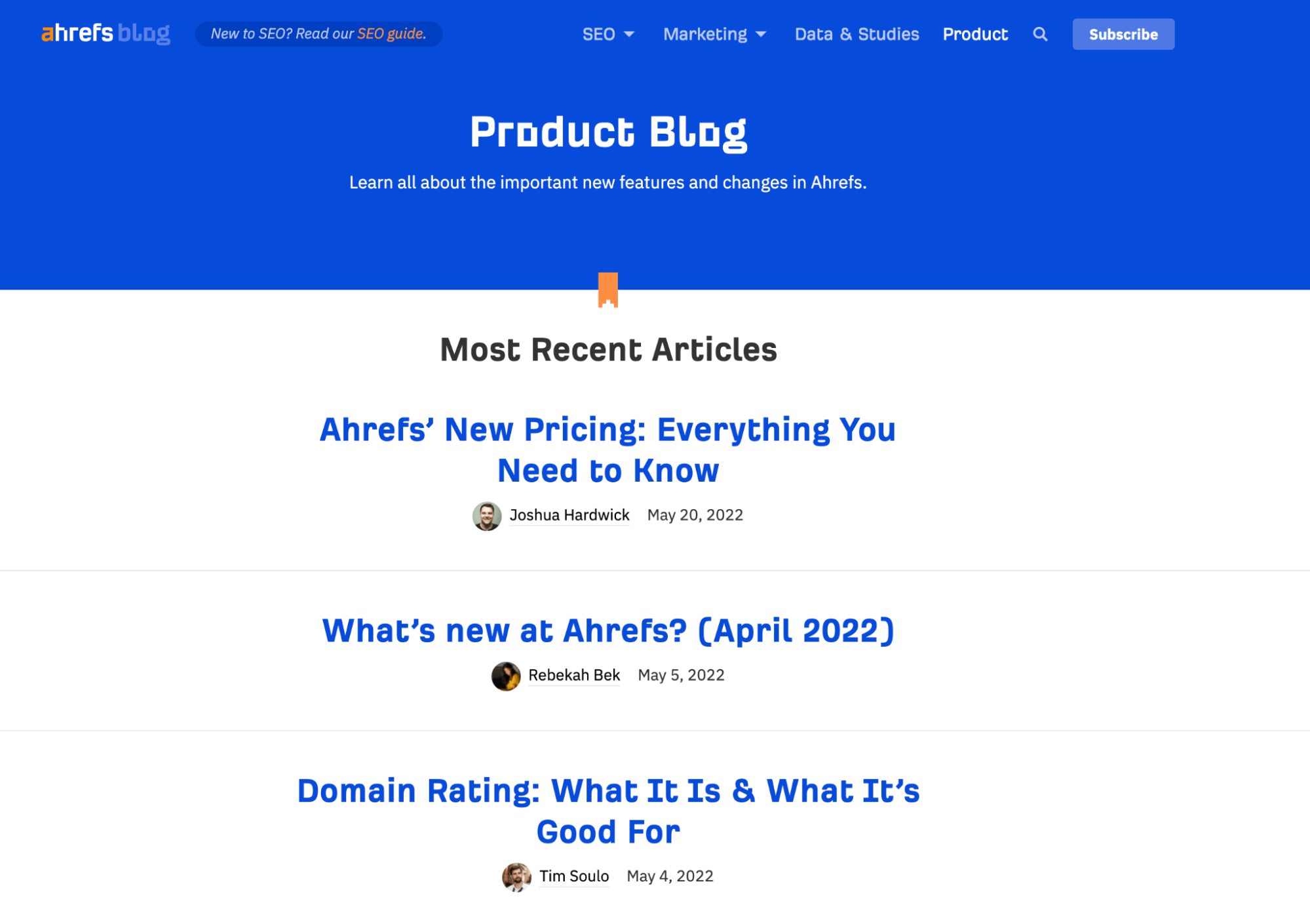
When you’re done with keyword research, you’ll find that 2 out of 3 metrics we’ll be talking about here are already available to you in Ahrefs’ Keywords Explorer: Traffic Potential (TP) and Keyword Difficulty (KD). The last metric you need to fill in manually is something we call “business potential.”
Let’s look at each one of them.
Traffic Potential (TP)
Just targeting a keyword with high search volume isn’t enough. You need to look at the overall TP because one piece of content can rank for thousands of different keywords.
For example, the keyword “how to make cold brew coffee” has a search volume of 29K in the U.S. But its TP is estimated to be 93K, and the main keyword responsible for most of that traffic is “cold brew”:

Looking at the box above, you may have already guessed how we calculate the TP metric. It’s the sum of organic traffic that the #1 ranking page for your target keyword receives from all the keywords that it ranks for.
Consider it a search volume on steroids.
Keyword Difficulty (KD)
This metric is an estimate of how difficult it is to rank for a given keyword on a scale from 0 to 100 based on the strength of link profiles of the top-ranking pages. The lower the score, the easier it is to rank at the top for the keyword.
If you were to target the “cold brew” keyword from above, you’d likely need quite a lot of backlinks to have a chance of ranking in the top 10 search results:
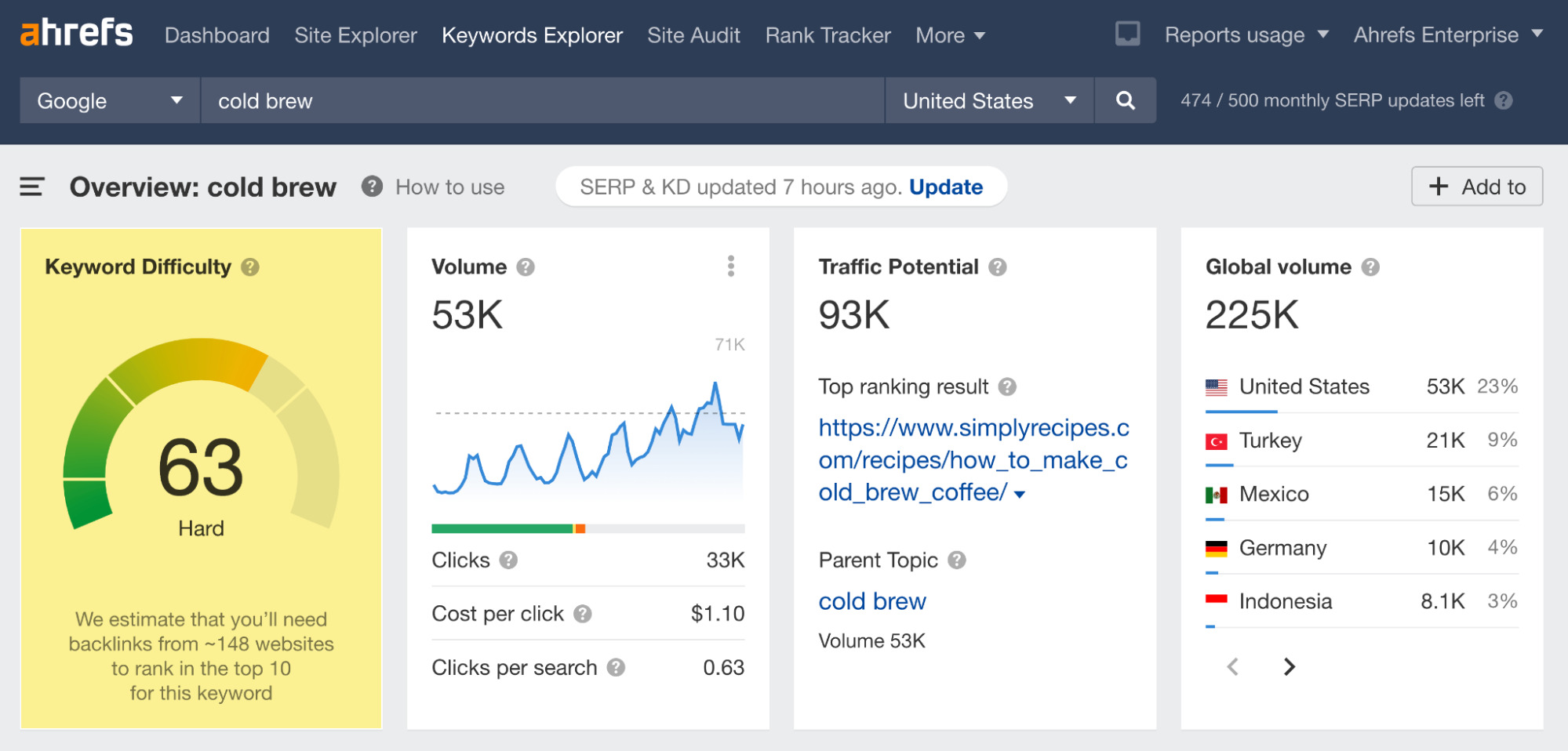
Business potential (BP)
To attract the right audience that drives conversions, you need to focus on writing content that highlights your product as a solution. To quantify the degree to which you can pitch your own products, we came up with this BP metric. Here’s how we work with it at Ahrefs:
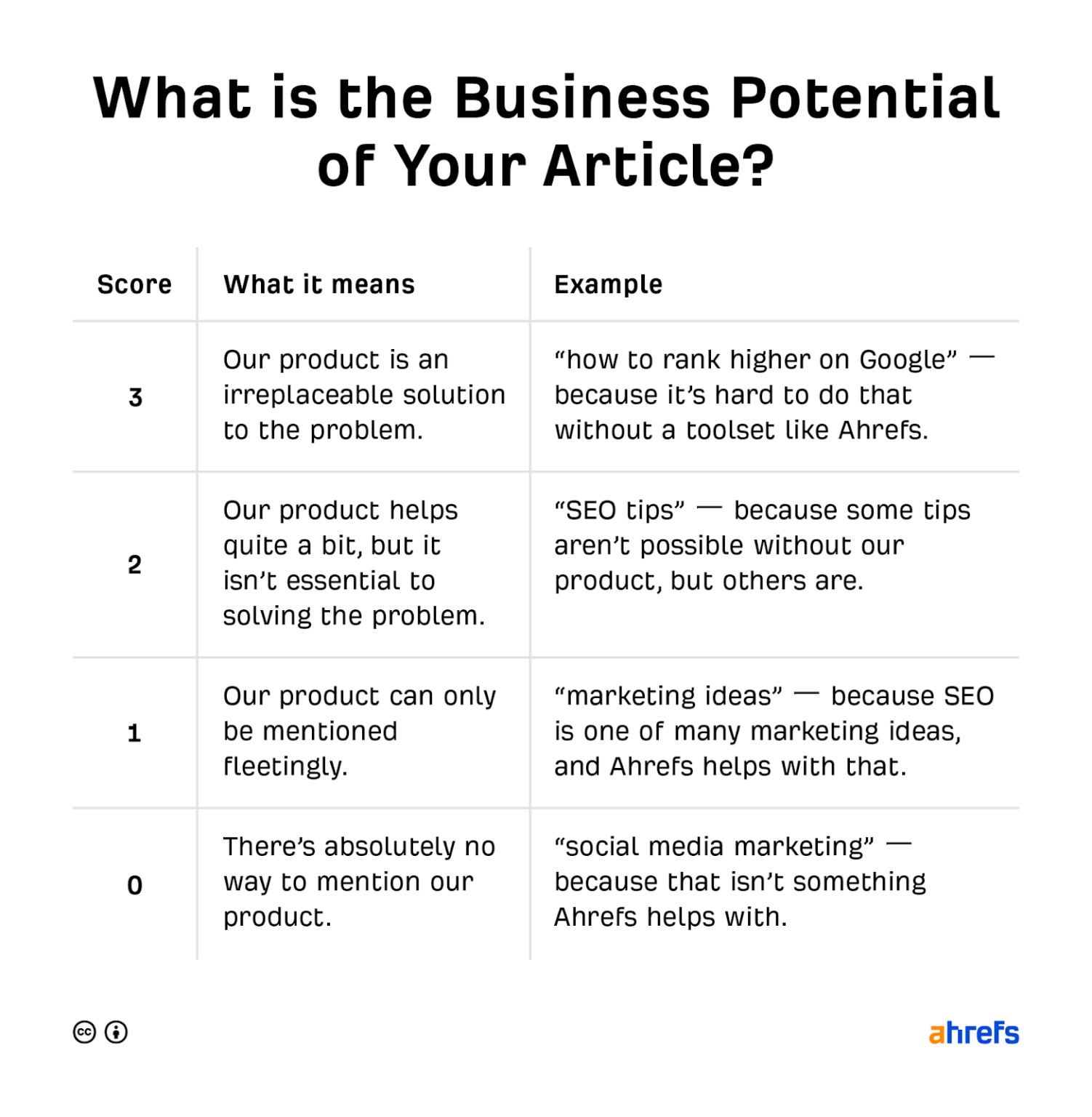
Now comes the most important part of content planning: prioritization. Unless you’re in a narrow niche, you’ll likely have hundreds, if not thousands, of content ideas if you follow our process.
Generally speaking, the best keywords (topics) to target are those with high traffic, high business potential, and low keyword difficulty. In reality, you’ll almost never find such opportunities, so you’ll have to make compromises.
The easiest compromises are made on the KD metric. This is because, in the long term, you’ll likely want to cover pretty much every topic with solid TP and BP.
Also, the sooner you tackle high-KD topics, the more time you have to accumulate the links you need organically. That’s because the content can rank for long-tail keywords, you point more internal links to it over time, or you get eyeballs on it through content distribution.
As for TP and BP, we can often see an inverse proportionality for these two metrics. Usually, the more search demand there is for a given non-branded topic, the further away those searchers are from making a purchase.
The distance from making a purchase is portrayed in this customer journey illustration:
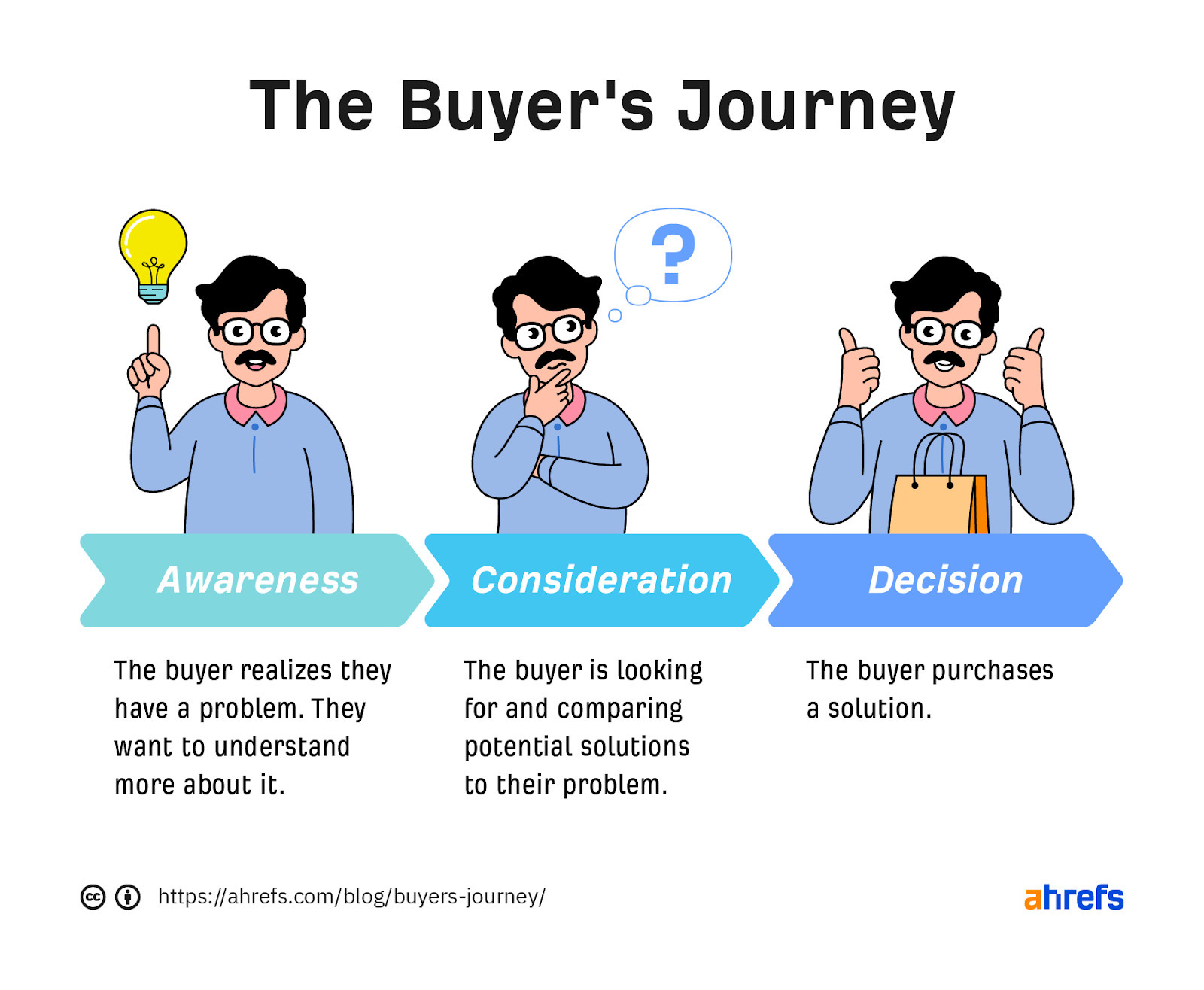
Someone searching for a high-TP topic like “what are backlinks” isn’t likely ready to become our customer yet. But that person may later search for something like “link building tools,” which has lower TP but much higher BP.
The best solution for this lies in a balance between everything. If you plan your content according to your customers’ journeys, you’ll have a nice mix in the end. We give the highest priority to BP. So if that and all other things are equal, we then select topics based on lower KD and higher TP.
A good approach may also be to focus on one topic at a time, such as the “link building” example from above. We have 42 articles on this topic on our blog as of now, and many of them drive a good amount of search traffic:
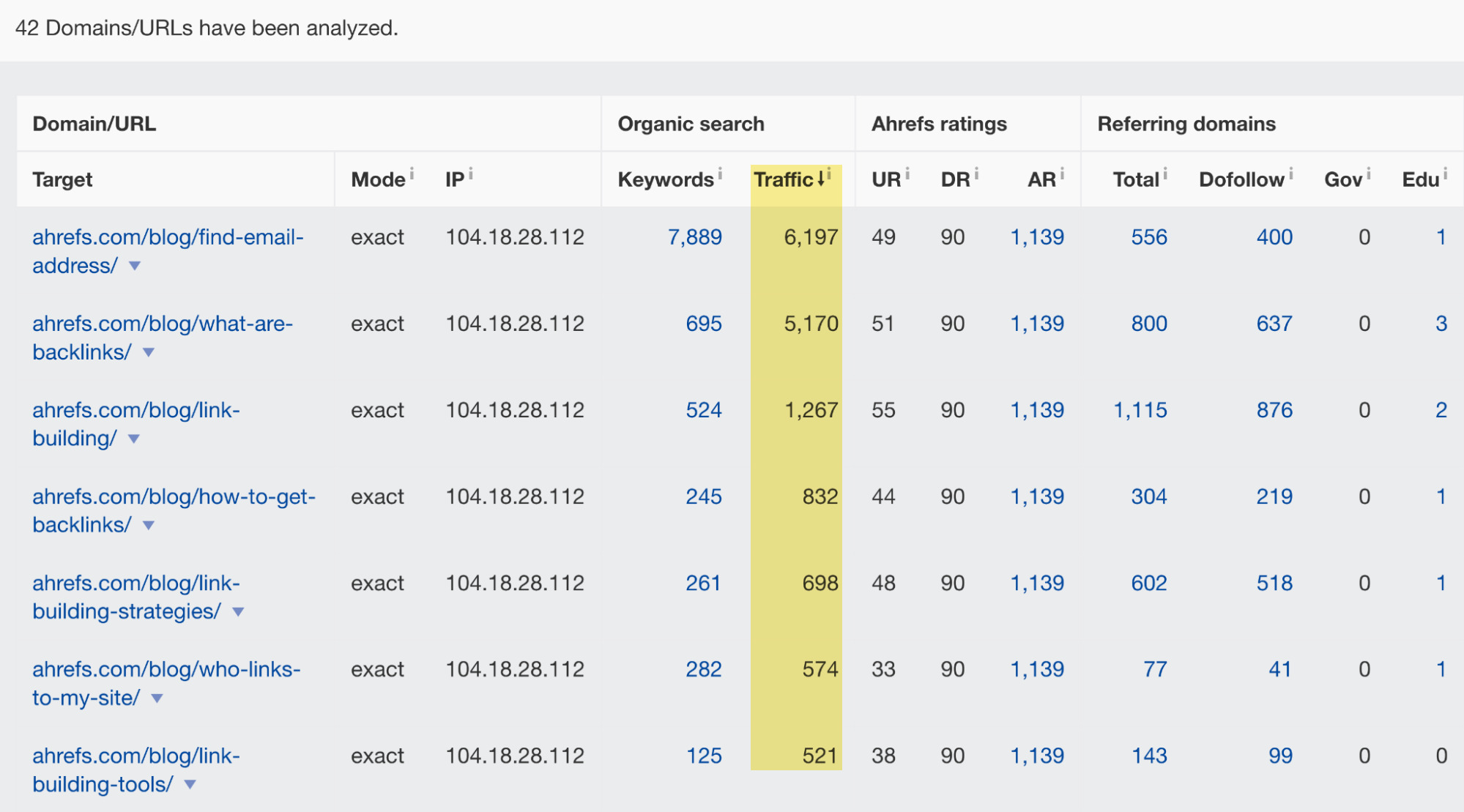
This is relevant to creating topic clusters, also known as content hubs, which are sometimes used as an effective SEO tactic:

Now that you’ve picked topics to focus on first, it’s time to put them into a content calendar. It’s a system that organizes, manages, and schedules content production to give you an overview of everything that will be published in a specific time frame. Here’s a sneak peek of our own content calendar:
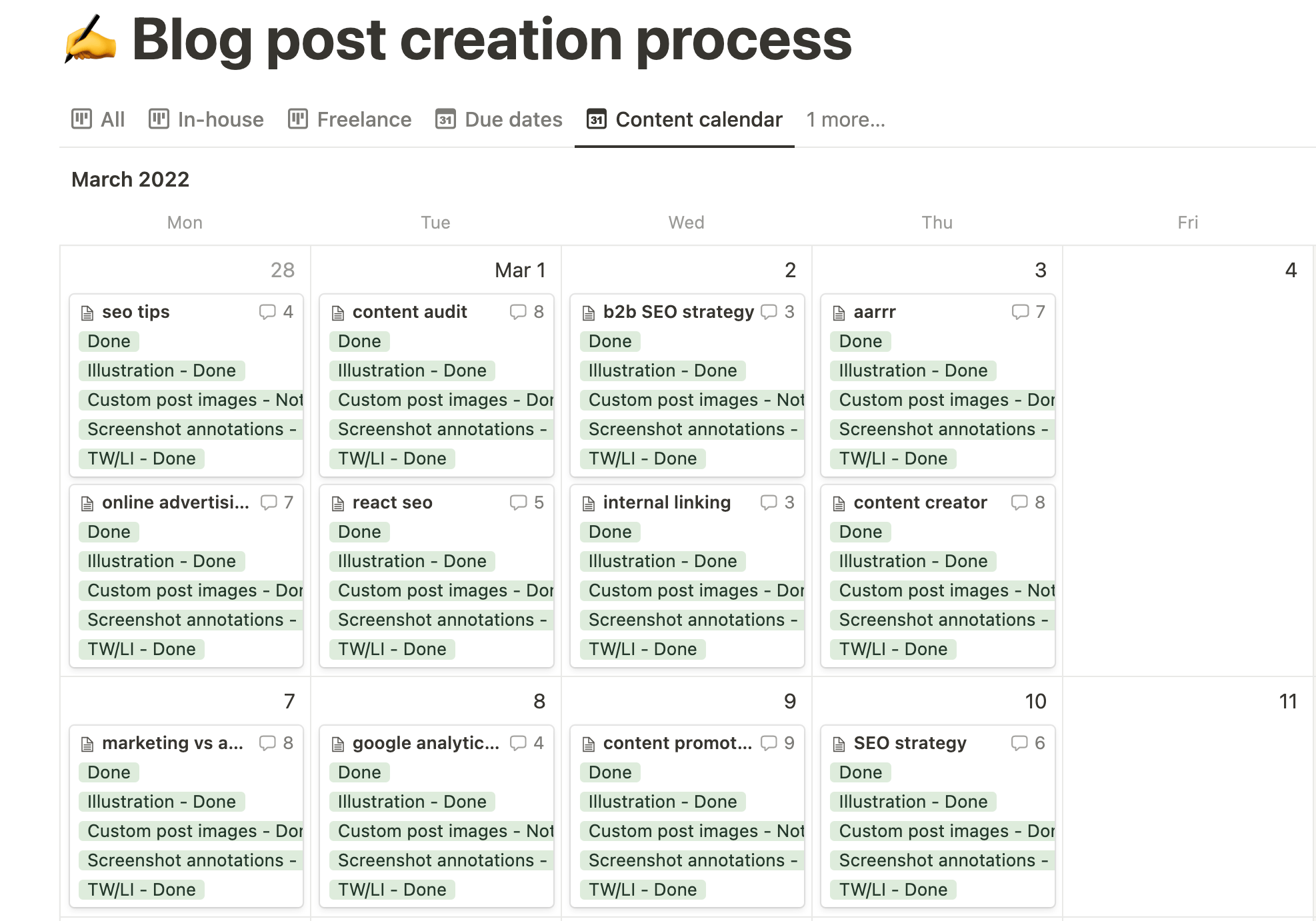
It’s created in Notion, with each card in the calendar structured like this:
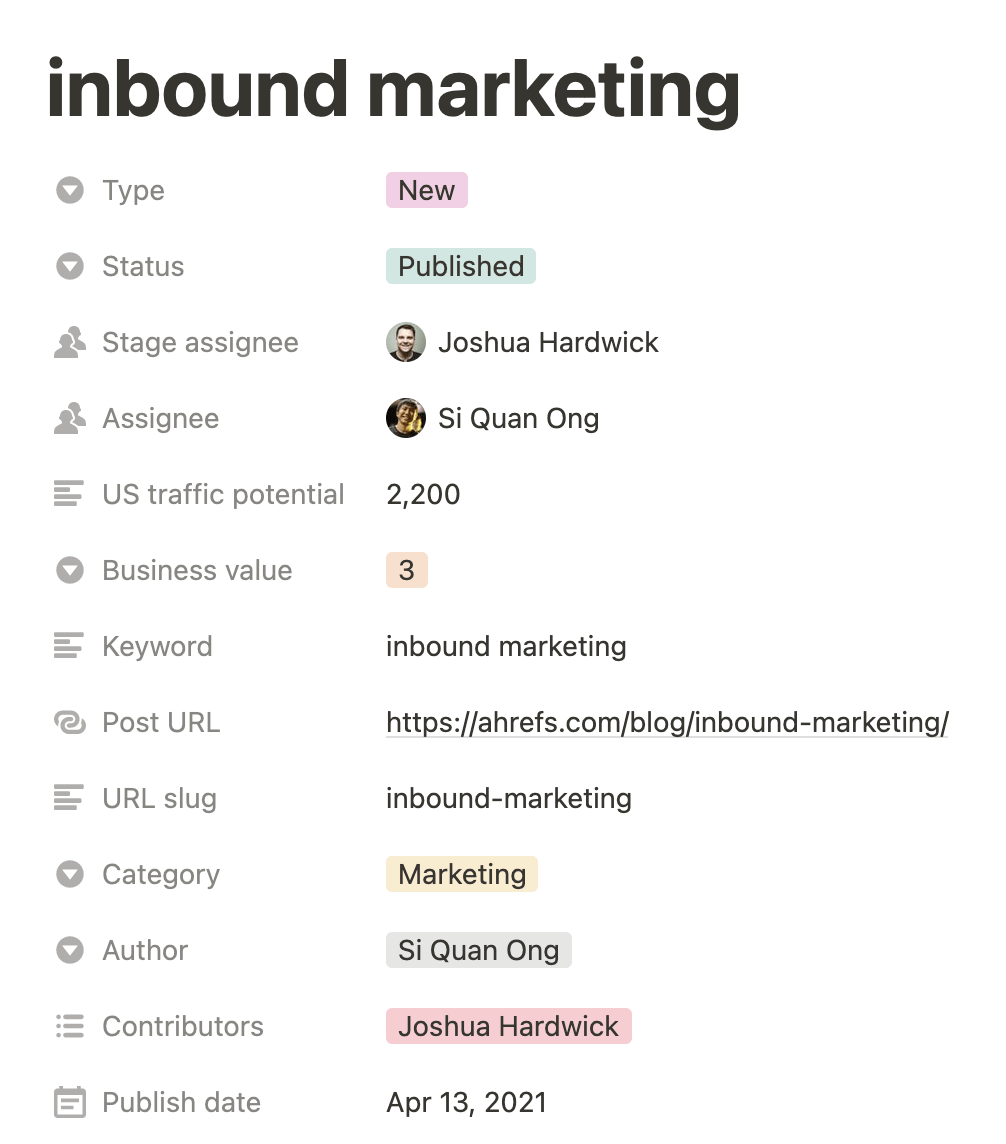
I recommend planning content one to three months ahead. If you’re just starting out with everything, don’t sweat it if you can’t meet your initial plans and deadlines. It takes time to get used to estimates of content production based on your resources (writers, SEOs, designers, etc.).
Here’s one thing to point out. Choosing quality over quantity is usually the right decision, so don’t rush it at all costs. Creating great content takes a lot of time, so adjust accordingly.
Recommended reading: How to Create a Content Calendar That Works for You
Final thoughts
Content planning isn’t rocket science and is something you should do at all costs if you’re serious about content marketing. Your prioritization criteria will likely evolve over time; you’ll add more keywords, topics, etc. Content plans aren’t one and done.
As you publish more and more content, you’ll inevitably have to take into account updating older content as well. You’ll get to the point where doing so will give you a higher return than creating new pieces of content.
At Ahrefs, we’re exactly at that stage. And as you can see, 20% of our articles published this year so far (29 out of 144) are republished posts:
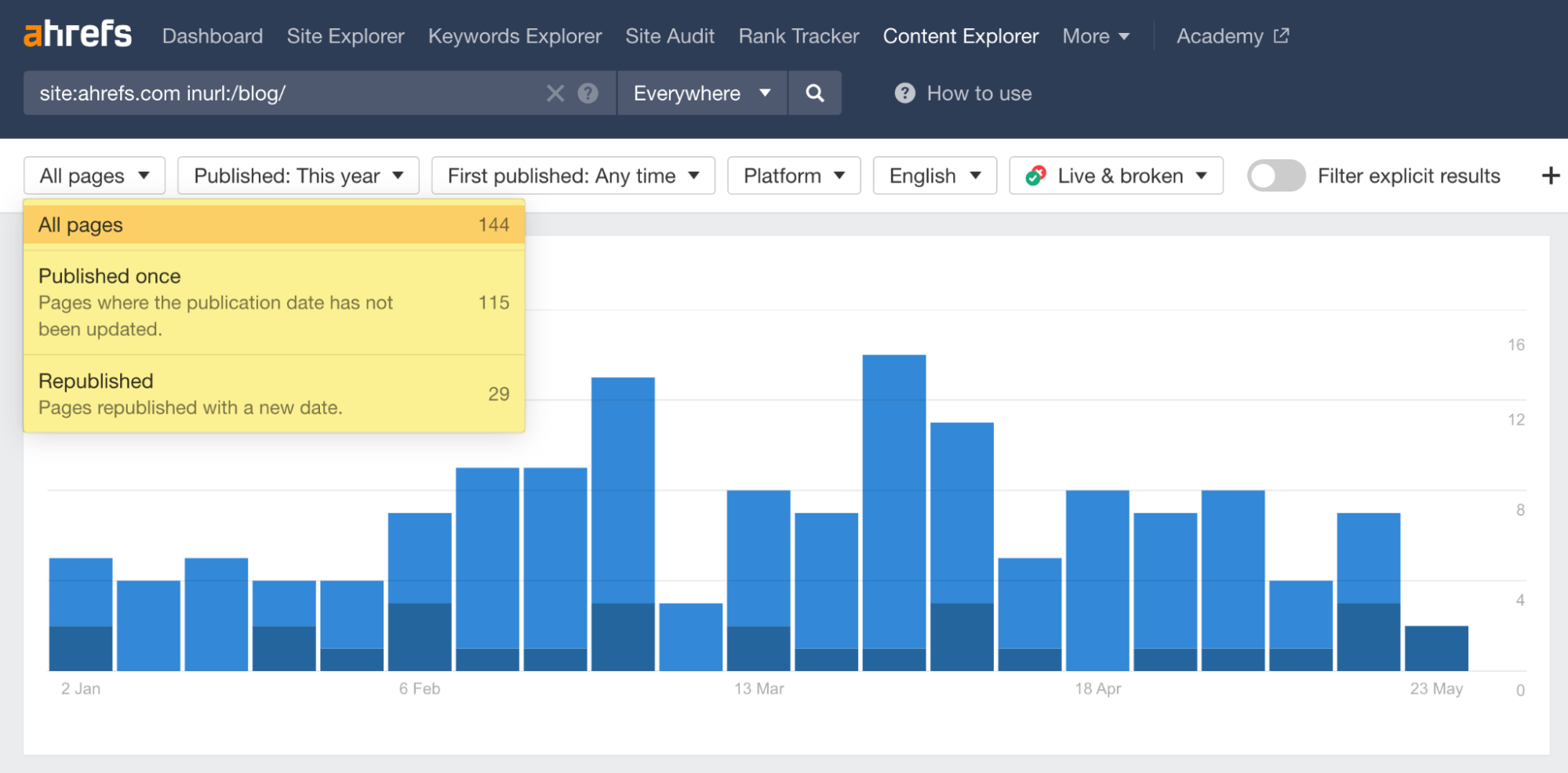
Got any questions? Ping me on Twitter.

